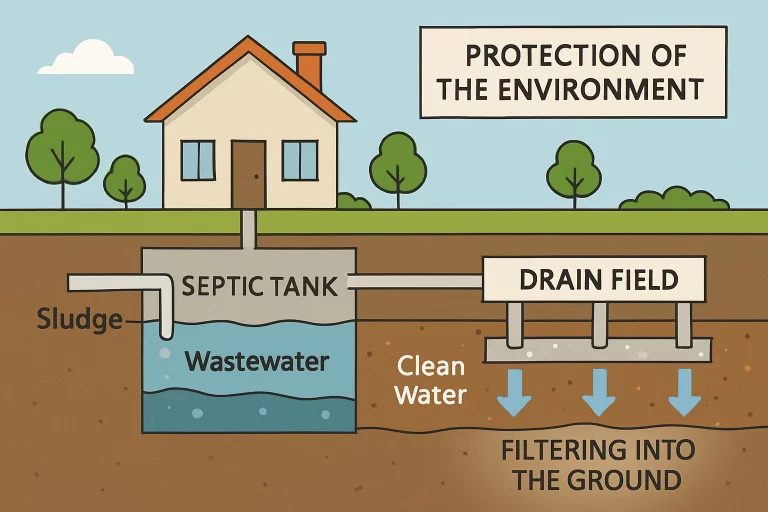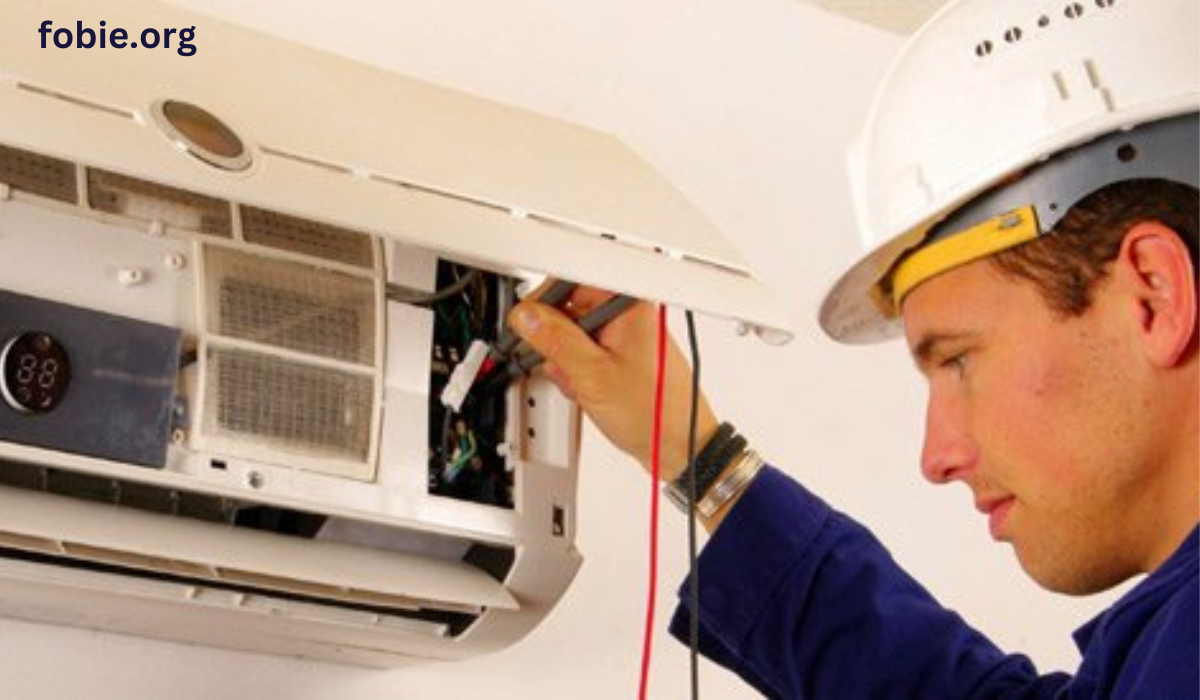Key Takeaways
- Maintaining a healthy drain field prevents costly septic system failures and extends system lifespan.
- Routine inspections, pumping, and proper care protect property value and the environment.
- Financial savings can be significant, as proactive care avoids major repair and replacement expenses.
- Environmental and health impacts are minimized with well-managed septic and drain fields.
Table of Contents
- Understanding the Role of the Drain Field
- Financial Benefits of Regular Maintenance
- Key Maintenance Practices
- Environmental and Health Considerations
- Conclusion
Understanding the Role of the Drain Field
A drain field, often called a leach, is the last but crucial step in a septic system’s treatment process. After solids settle in the septic tank, partially treated liquid flows to the drain field, where a network of perforated pipes disperses it across a broad soil area. Here, the wastewater gradually seeps into the ground, allowing soil microbes to naturally filter out contaminants and pathogens before the water reaches the water table or returns to the environment. This step is vital—not just for the health of your plumbing, but for the well-being of the environment and local water supply. If the drain field is poorly maintained or overloaded, it can result in clogs, slow drains, foul odors, soggy ground, and even contaminated groundwater.
The effectiveness and longevity of your septic system rest squarely on the ongoing health and proper function of your drain field. Investing in expert drain field services ensures that problems are detected early and maintained correctly, and the system integrates seamlessly with your property’s soil and water characteristics. Professional intervention doesn’t just address existing issues—it can prevent minor complications from becoming catastrophic problems that lead to expensive repairs or even system replacement.
Financial Benefits of Regular Maintenance
A properly maintained drain field isn’t just about convenience—it’s a wise financial decision. Overlooking routine care can lead to gradual damage, escalating to costly repairs or full system replacements. Relying on professional septic services helps ensure your drain field remains in optimal condition, protecting your property and wallet from avoidable expenses. Proactive offers serious, long-term savings in several key ways:
- Preventing Major Repairs: Even minor septic issues, if left unchecked, can swiftly escalate into expensive emergencies. Routine inspections and regular pumping identify and address blockages, leaks, or misalignments before they cause failure. According to the U.S. Environmental Protection Agency (EPA), homes with regularly serviced septic systems can avoid restoration bills in the thousands, costs that often occur seemingly out of nowhere when a poorly maintained system fails. These savings alone can pay back the cost of more frequent routine service.
- Extending System Lifespan: The operational lifespan of a well-maintained septic and drain field can exceed 30–40 years, while systems that are neglected may require full replacements in under 10 years. Depending on your location and property size, replacing a leach field usually costs anywhere from $3,000 to $10,000 or more. Regular care, including cleaning and relational monitoring, effectively defers this huge expense. For guidance on getting the most from your system, review tips from Drain Field Care Essentials.
- Maintaining Property Value: Prospective buyers are wary of homes with unresolved septic or drain field issues, which sometimes require costly pre-sale repairs or reduce your negotiating power. A properly documented maintenance record, though, reassures buyers and inspectors that your home has been responsibly cared for and protects your property’s resale value.
- Lowering Health and Environmental Costs: Malfunctioning drain fields can contaminate drinking water sources, create unsafe living conditions, and lead to costly legal liabilities or state/federal fines for violations. Proper maintenance keeps your system in line with environmental regulations, protecting your community and minimizing personal risk.
Key Maintenance Practices
Protecting your drain field doesn’t require elaborate new routines, but consistency is essential. Employing the proper practices ensures your septic system stays in peak working order for the long haul:
1. Regular Inspections
Have your entire septic system—including the tank and drain field—assessed by licensed professionals at least every three years, or more frequently if your household uses more water or the system is older. Trained technicians can spot early warning signs such as settling, unexpected ponding, or inefficiencies in water flow that aren’t yet apparent to homeowners, allowing you to make affordable repairs before larger breakdowns develop.
2. Scheduled Pumping
Systematic pumping of the septic tank every three to five years is vital. Over time, sludge and scum levels build up, putting extra pressure on your drain field’s ability to disperse and filter effluent. Removing solids prevents what can jeopardize your entire system, protecting your property value and financial health.
3. Water Conservation
Excess water flowing through your system can overwhelm a drain field and drastically shorten its life. Consider installing low-flow fixtures, repairing leaks immediately, and spreading laundry and dishwasher loads. Sensible water management relieves stress on your septic components, allowing your drain field to filter wastewater effectively for decades.
4. Smart Waste Disposal
Only human waste and toilet paper should ever enter your septic system. Even so-called “flushable” wipes, hygiene products, grease, and strong chemicals damage the delicate balance of beneficial bacteria in your tank and can block pipes between the tank and the drain field. These clogged pipes are one of the leading causes of slow drains and costly, preventable leaks.
5. Protecting the Drain Field Area
The area directly above your drain field needs special care. Avoid parking vehicles or placing sheds, playground equipment, or heavy objects on this section of your yard, and never plant trees or shrubs with aggressive roots nearby. Vehicle traffic and heavy weights can compact soil and crush underground pipes, while invasive roots commonly cause ruptured systems.
Environmental and Health Considerations
Maintaining a healthy drain field goes beyond saving money—it’s an essential act of environmental stewardship. When the drain field functions properly, it filters out harmful bacteria, viruses, and nutrients, preventing them from entering the groundwater, nearby streams, and lakes. Contaminated groundwater can threaten public and private wells and ultimately pose risks to the entire neighborhood’s water supply. Additionally, properly treated wastewater keeps local habitats healthy, supports safer recreation, and minimizes the risk of costly public health crises.
Regular drain field maintenance protects household members and upholds the integrity of the broader community’s water resources. Minimizing the chances of wastewater backflow and contamination means less risk of bacterial infections, toxic blooms, or nuisance odors while contributing to a healthier, more sustainable ecosystem.
Conclusion
Proactive care for your drain field is a wise, straightforward investment that pays off annually. With regular inspections, professional pump-outs, diligent water management, and correct waste handling, homeowners experience fewer headaches, higher property value, and peace of mind knowing their septic system works reliably and efficiently. Enlist the help of experienced drain field services to ensure your system remains a long-term asset, not a hidden liability. The financial, environmental, and practical benefits of keeping your drain field healthy make it one of the wisest investments for property owners.
READ ALSO: Setting the Record Straight on Drains and Pipes: The Art of Plumbing and Debunking Common Myths











